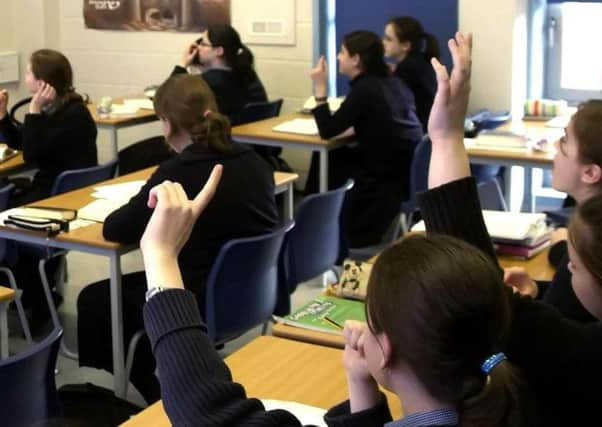Yorkshire schools '˜blighted by ethnic segregation'


The study shows that in 2016 more than a quarter of primaries and around two fifths of secondaries were ethnically segregated.
And nearly three in 10 primary schools and more than a quarter of secondary schools are split by social background.
Advertisement
Hide AdAdvertisement
Hide AdThis means that many schools across the country have pupil populations made up overwhelmingly of white British, or ethnic minority youngsters, or have large numbers of children from either rich or poor homes.
Areas seeing rising school segregation include Kirklees in West Yorkshire, where more than 48 per cent of primaries and 79 per cent of secondaries show evidence of ethnic division, compared to 46 per cent and 77 per cent in 2011, the report said.
North Yorkshire maintains the lowest level in the region, with more than 19 per cent of primary schools and 38 per cent of secondaries showing evidence of ethnic segregation.
A spokesman for Kirklees Council said: “We celebrate our diversity as a strength and promote cohesion and integration and we work closely with schools, parents and our inter faith networks.
Advertisement
Hide AdAdvertisement
Hide Ad“Where children live and go to school in an area where there is less opportunity to experience difference, the communities and schools work together to promote integration. This includes taking part in enrichment programmes that allow children from different schools to come together and share what they have in common regardless of race and ethnicity.”
The spokesperson said the authority reviewed its admissions arrangements on an annual basis, adding: “The law gives parents and carers the right to express a preference for the school they wish to attend - they can choose which schools to put on their application and the order of preference. Our aim is to ensure that we put children and young people at the heart of what we do and that there are sufficient, high quality places in every community.”
The findings show that more needs to be done to make school intakes more representative of their local communities, according to The Challenge, which carried out the research.
The charity, working with the iCoCo Foundation and SchoolDash which both promote social inclusion, examined how segregated a school was by comparing its numbers of free school meals and white British pupils with those of 10 schools closest to them.
Advertisement
Hide AdAdvertisement
Hide AdThey used data for 2011 to 2016, covering more than 20,000 state schools. A school was considered “segregated” if the proportion of ethnic minority pupils or pupils on free school meals was very different to those at the 10 nearest schools.
In Bradford, levels of segregation have fallen from 63 to 58 per cent in the city’s primary schools and from 89 to 70 per cent in secondary schools. But during the same period, the number of white British children attending Bradford schools fell from 50 to 44 per cent.
The study found that secondary schools are more likely to be segregated by ethnicity, while primaries are more likely to be divided along socio-economic lines.
The Challenge’s director, Jon Yates, said: “This study shows far more needs to be done to make sure school intakes are representative of local communities.”
The Department for Education is considering the review and will “respond in due course”.